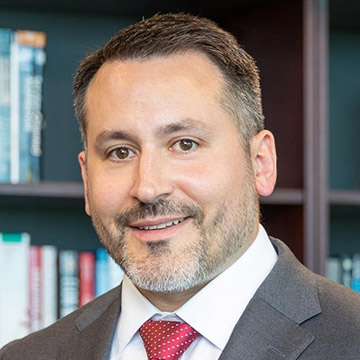Keynotes
Threat Models for AI-Enabled 5G Infrastructure
Abstract 5G envisions using artificial intelligence and machine learning to dynamically orchestrate network resources to support real-time use cases, including near-real-time orchestration of the radio access network (RAN) and non-real-time orchestration of broader virtualized, software-defined network resources. This talk explores different approaches for applying AI/ML to these orchestration functions, and examines specific threat models to inform how these AI/ML functions should be secured.


Charles Clancy
Charles Clancy is Vice President for Intelligence Programs at MITRE where he leads the organization’s technical strategy and priorities in support of the US intelligence community and federal law enforcement. Before joining MITRE in 2019, Clancy served as the Bradley Professor of Cybersecurity in the Department of Electrical and Computer Engineering at Virginia Tech, and executive director at the Hume Center for National Security and Technology. He has previously served as an editor for IEEE Transactions on Information Forensics and Security, and IEEE Transactions on Cognitive Communications and Networking. He served as TPC co-chair for IEEE DySPAN 2017 and general chair for IEEE CNS 2019.
Side and Covert Channels: the Dr. Jekyll and Mr Hyde of Modern Technologies
While Smartphone and IoT devices usage become more and more pervasive, people start also asking to which extent such devices can be maliciously exploited as “tracking devices”. The concern is not only related to an adversary taking physical or remote control of the device, but also to what a passive adversary without the above capabilities can observe from the device communications. Work in this latter direction aimed, for example, at inferring the apps a user has installed on his device, or identifying the presence of a specific user within a network.
In this talk, we discuss threats coming from contextual information and to which extent it is feasible, for example, to identify the specific actions that a user is doing on mobile apps, by eavesdropping their encrypted network traffic. We will also discuss the possibility of building covert and side channels leveraging timing, heat, energy consumption, and audio signals, to steal information from mobile devices, as well as inferring keypresses, password & PINs.


Mauro Conti
Mauro Conti is Full Professor at the University of Padua, Italy, and also affiliated with TU Delft and UW Seattle. He obtained his Ph.D. from Sapienza University of Rome, Italy, in 2009. After his Ph.D., he was a Post-Doc Researcher at Vrije Universiteit Amsterdam, The Netherlands. In 2011 he joined as Assistant Professor the University of Padua, where he became Associate Professor in 2015, and Full Professor in 2018. He has been Visiting Researcher at GMU, UCLA, UCI, TU Darmstadt, UF, and FIU. He has been awarded with a Marie Curie Fellowship (2012) by the European Commission, and with a Fellowship by the German DAAD (2013). His research is also funded by companies, including Cisco, Intel, and Huawei. His main research interest is in the area of Security and Privacy. In this area, he published more than 300 papers in topmost international peer-reviewed journals and conference. He is Area Editor-in-Chief for IEEE Communications Surveys & Tutorials, and Associate Editor for several journals, including IEEE Communications Surveys & Tutorials, IEEE Transactions on Information Forensics and Security, IEEE Transactions on Dependable and Secure Computing, and IEEE Transactions on Network and Service Management. He was Program Chair for TRUST 2015, ICISS 2016, WiSec 2017, ACNS 2020, and General Chair for SecureComm 2012 and ACM SACMAT 2013. He is Senior Member of the IEEE.







